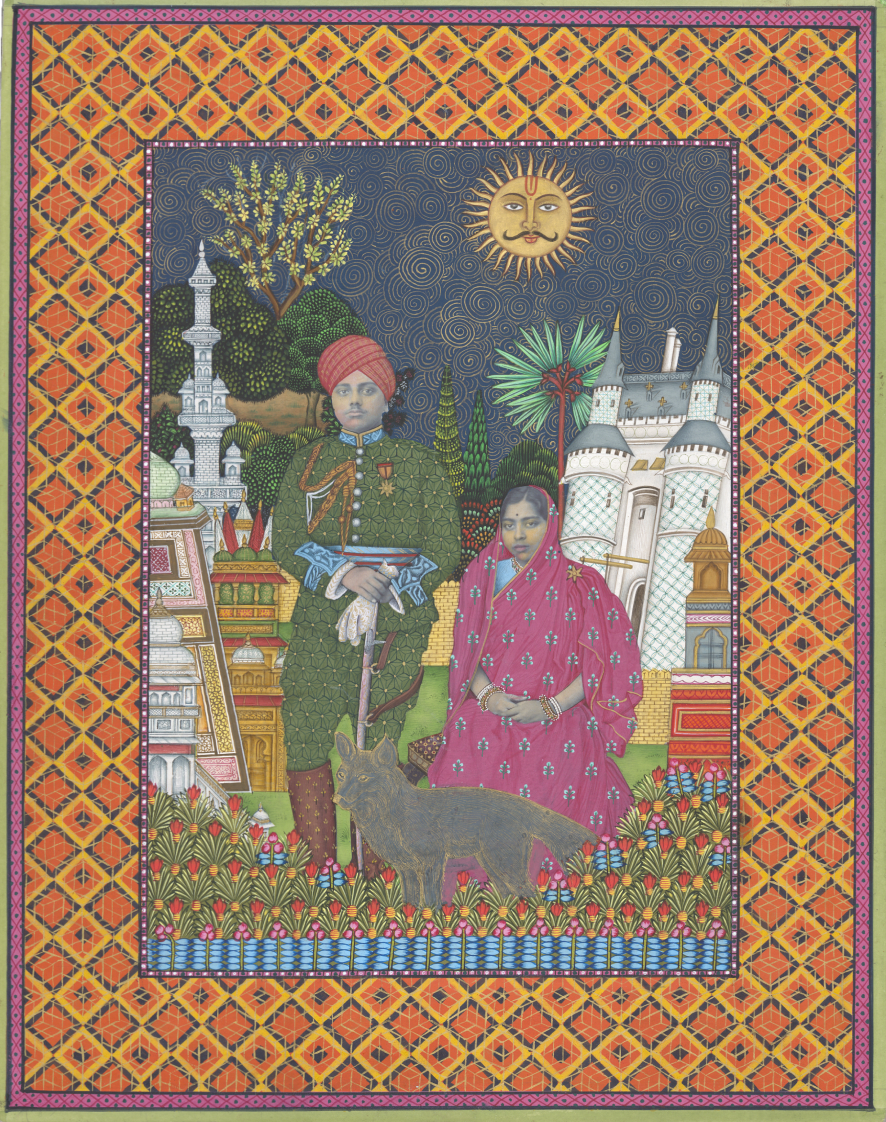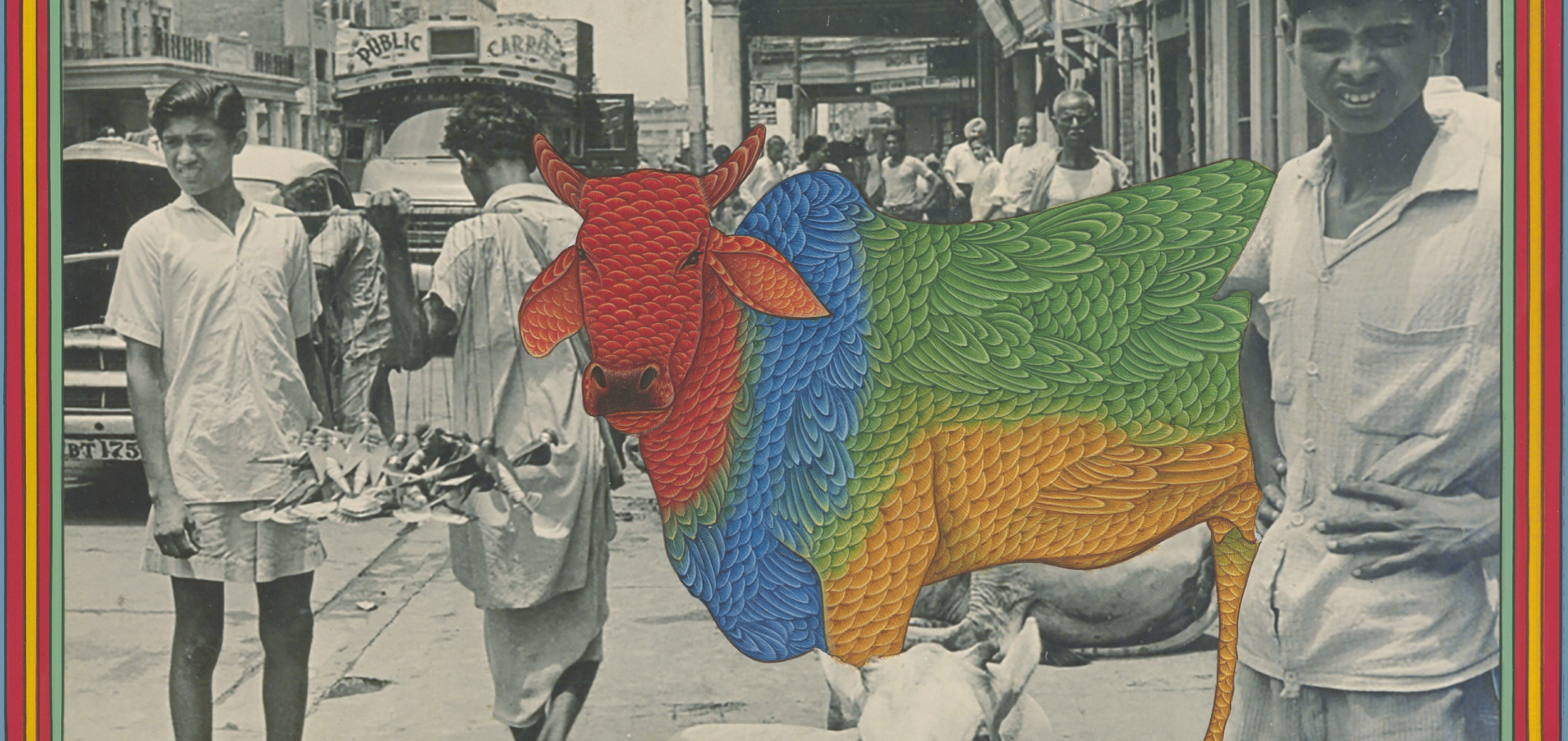5 May - 21 July 2024
Ground Floor | Tuesday to Sunday | 11am-7pm
Ever wondered why the faces in old photographs often appear so serious? Is it the weight of the past, the limitations of early photography, or perhaps the secrets held by those who once posed?
What The Camera Didn’t See blurs the boundaries between photography and painting by infusing a sense of wonder and colour into static, formal compositions. The photographs from Museum of Art & Photography’s (MAP) collection depict architecture or royalty in specific ways, often demonstrating power, regency, family lines, and local attributes through decor and adornment.
But what did the camera not capture?Alexander Gorlizki gives these historic photographs a fantastical context by creating elaborate compositions on and around the originals, reanimating and transforming images of royalty, common people, architecture, nature, and more into vibrant, whimsical narratives. The artists from the Pink City Studio in Jaipur, led by master miniature painter Riyaz Uddin, reproduce these new forms, colours, and patterns in immaculate detail, using centuries-old techniques and materials. Most of the works in this exhibition are based on copies from MAP’s photography collection, while the others are painted directly on vintage photographs.
The integration of elements from the 'outside' subverts the rigidity of history, where these multi-layered compositions transcend time and place, thereby challenging conventional notions of historical imagery.


In 1996, Alexander Gorlizki established an atelier with master miniature painter Riyaz Uddin in Jaipur, Rajasthan. Working alongside Riyaz Uddin, his students and assistants, the Pink City Studio has evolved over the past 27 years into an association of artists dedicated to the 700-year-old miniature tradition. While the materials, techniques and meticulous brushwork remain true to their origins, the new whimsical narratives, forms and patterns expand the boundaries to reflect a visual language spanning history, geography and cultures.
Register for a guided walkthrough at